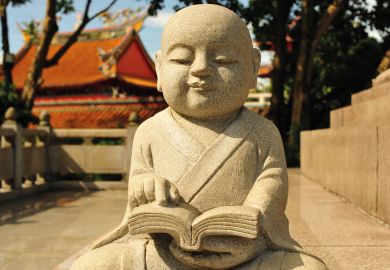On the surface, things have gone well for Singapore’s universities under outgoing prime minister Lee Hsien Loong. During his 20 years at the helm – set to end on 15 May – the number of public universities has doubled and the country’s top institutions were ranked some of the best in Asia.
Under Mr Lee’s tenure, Singapore “transited from a mass to a universal higher education system”, said Tan Eng Thye, associate professor at Nanyang Technological University (NTU). Under the plan already set out when he entered office, participation in government-funded undergraduate education shot up from 22 per cent in 2004 to 50 per cent in 2023.
Not only were more universities established, but increasing numbers of students were also given the opportunity to pursue undergraduate degrees. In general, education became more accessible thanks to generous government subsidies.
Mr Lee “also emphasised the importance of differentiation”, said Lily Kong, president of Singapore Management University, with a wider range of pathways available to students. Public institutions were also granted more autonomy to experiment, which has led many to offer interdisciplinary options to students.
“The landscape has moved away from science and tech and business being the main choice of students. Now they have a much wider choice such as the creative arts, fashion, design and sports management, and they have career options as well to go with that,” said N. Varaprasad, partner at Singapore Education Consulting Group. These changes have happened in line with wider economic plans for the country, in a bid to ensure that students are prepared for a rapidly changing world of work.
This academic success story, however, goes hand in hand with the tight grip that Singapore’s universities are under. The country appeared in the bottom half of the 2024 Academic Freedom Index, only a few places above authoritarian Iran.
And, while progress has been strong in domestic education, internationalisation attempts have had mixed results. In 2002, two years before Mr Lee entered office, the government launched the Global Schoolhouse Project, aiming to enrol 150,000 international students by 2015.
This “signalled a big step in the direction of the marketisation of higher education”, said Dr Tan. However, the project was unsuccessful: in 2022, there were around 65,000 international students in the country. The government’s plans were hampered by a public debate that questioned mass immigration and criticised the idea that Singaporeans might lose out on university places to foreign students.
Branch campuses and international collaborations also struggled to take off, with the University of New South Wales Asia opening in March 2007, only to close four months later due to low student numbers. This incident was “embarrassing”, said Dr Tan, and the start of a pattern. More recently, the Yale-NUS College announced it would close in 2025, and the Massachusetts Institute of Technology’s collaboration with Singapore University of Technology and Design came to an end in 2021 after 11 years.
And, despite the gains made in domestic higher education over the past two decades, there are concerns across Singaporean society that some are still being left behind. With participation rates already high, policymakers feel that simply enrolling more of the population into traditional degree programmes isn’t necessarily the answer.
Instead, Mr Lee’s government has increasingly focused on lifelong learning, giving all adults the chance to continue their education. This “shifts the focus from front-loading education to one that emphasises learning through one’s adult years while in the workforce, where reskilling and upskilling are critical for continued relevance”, said Professor Kong.
Underlying all of these changes has been a move towards building “a society of second chances”, said Dr Tan – a country where an individual's life path isn’t determined by the academic credentials they achieved at age 21.
This shift was formally set out in 2023, when Singapore’s education minister, Chan Chun Sing, announced the government’s intention to “revisit meritocracy”. Mr Chan acknowledged that the idea of a society governed by those selected due to merit, while having enabled Singapore to thrive, was imperfect.
By perpetuating “the same definitions of success”, Singapore would “stagnate and become irrelevant,” he warned. Instead, the country needed to move away from the “narrow definition of credentials and qualifications” and reward “different kinds of work”.
This was “a massive paradigm shift in the way the whole of Singapore society ought to be run”, said Dr Tan. For Mr Lee’s successor, the challenge will be navigating this path, while Singapore’s universities will be expected to continue evolving to support the government’s new vision.
For Mr Lee, his legacy is the philosophy he leaves behind, said Pak Tee Ng, an associate professor at NTU. “The worth of a university in Singapore is not just about key performance indicators such as global rankings, but how well it serves the country and the people.”
Register to continue
Why register?
- Registration is free and only takes a moment
- Once registered, you can read 3 articles a month
- Sign up for our newsletter
Subscribe
Or subscribe for unlimited access to:
- Unlimited access to news, views, insights & reviews
- Digital editions
- Digital access to THE’s university and college rankings analysis
Already registered or a current subscriber?








